-
ENVIRONMENT
- Progress and Goals
- Environmental Management
- Design for Life-Cycle Sustainability
-
Products
- Fuel Economy and Greenhouse Gas Emissions
- Non-CO2 Tailpipe Emissions
- Sustainable Materials
- End of Life
- Operations
- Supply Chain
- Data
- Case Studies
Toolbox
Fuel Economy and Greenhouse Gas Emissions
On This Page
Our current fuel economy performance is discussed in this section. We are pursuing the development of new technologies with fuel economy benefits for the future, including additional hybrids, plug-in hybrids, battery electric vehicles, advanced diesel engines, hydrogen fuel cell vehicles and biofueled vehicles, as discussed in the Sustainable Technologies and Alternative Fuels Plan. Our climate change strategy and participation in public policy processes related to climate change and fuel economy are discussed in the Climate Change section.
Fuel Economy Performance – U.S.
For the 2009 model year, the Corporate Average Fuel Economy (CAFE) of our cars and trucks increased by 4.2 percent relative to 2008. Preliminary data for the 2010 model year shows a 3.2 percent improvement in CAFE for cars and a slight decline of 2.4 percent in CAFE for trucks as compared to 2009. The projected increase in CAFE for our cars is due to increased customer demand for the more fuel-efficient midsize cars, which rose by 18 percent. This includes increased demand for the newly introduced 2010 Fusion Hybrid. The projected decrease in CAFE for our trucks can be attributed to increased demand for standard pickup trucks, which is up by approximately 6 percent and for medium and large SUVs, which is up by 5 percent. These mix shifts can be seen in the charts below.
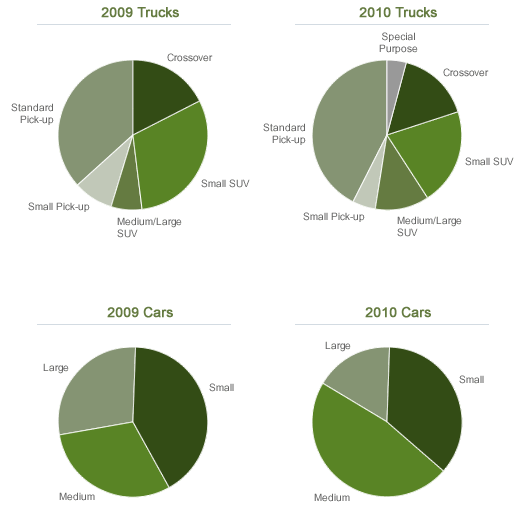
Compared to the industry fuel economy average, Ford's 2010 MY U.S. vehicles rank better than average in four of ten categories, below average in two, and average in four. This can be seen in the Fuel Economy of U.S. Ford Vehicles by EPA Segment graphic.
According to the EPA, no automaker posted a larger fleet-wide gain in fuel economy between 2004 and 2009 than Ford. Based on EPA measurements, Ford's combined car and truck fuel economy has improved nearly 20 percent since 2004 – almost double the improvement of the next closest competitor. In addition, Ford's tailpipe CO2 emissions are declining. Ford's fleet average CO2 emissions have decreased (i.e., improved) 16 percent from the 2004 model year to the 2009 model year and are down approximately 5 percent from 2008.
In 2009, Ford committed that every all-new or redesigned vehicle we introduce will be best in class or among the best in class for fuel economy in its segment. Examples include the 2010 Ford Fusion and Mercury Milan hybrids, which, at 34/31 mpg, are fuel economy leaders in their class. Additional examples can be found in the section on Delivering More Fuel-Efficient Vehicles.
For the 2010 model year, we offered 10 vehicles that get 30 mpg or better, based on highway fuel economy estimates. These vehicles include the Ford Focus, Ford Fusion, Ford Fusion Hybrid, Mercury Milan, Mercury Milan Hybrid, Ford Escape Hybrid, Mercury Mariner Hybrid, and Volvo V50, C30 and S40 (see below). Compared to 2009, the number of 2010 vehicles that achieve 30 miles per gallon or better has increased.
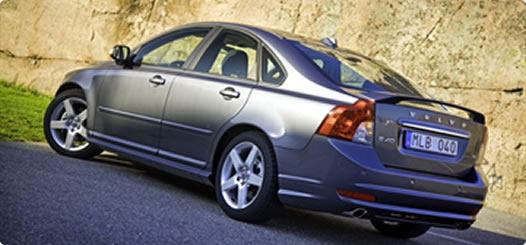
2010 Volvo S40
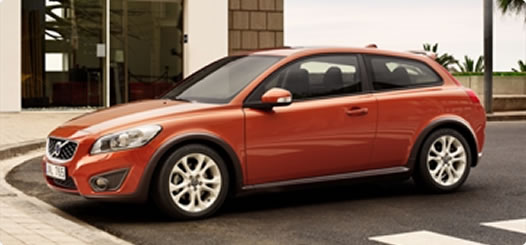
2010 Volvo C30
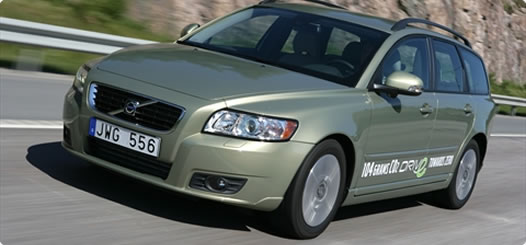
2010 Volvo V50
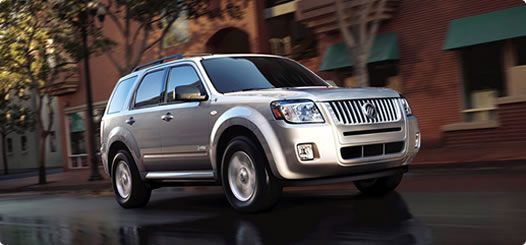
2010 Mercury Mariner Hybrid

2010 Ford Escape Hybrid
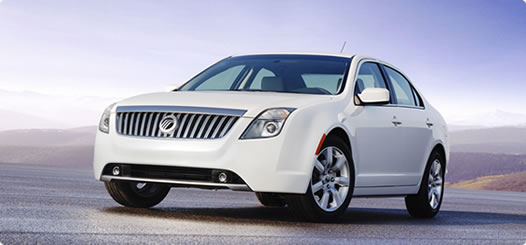
2010 Mercury Milan
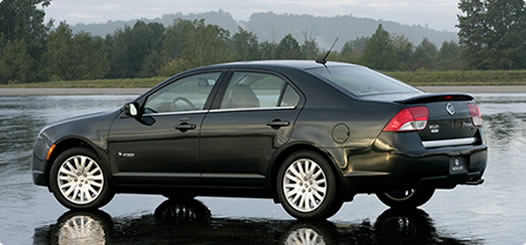
2010 Mercury Milan Hybrid
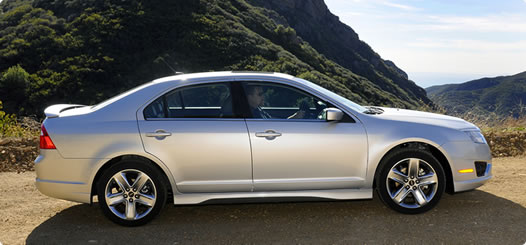
2010 Ford Fusion
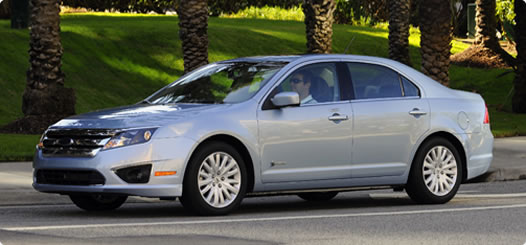
2010 Ford Fusion Hybrid
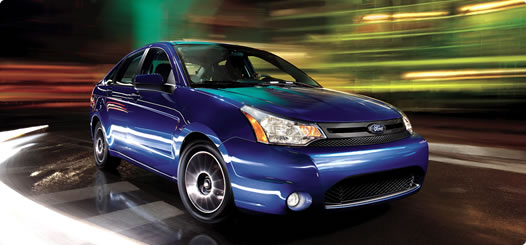
2010 Ford Focus
For more information on United States fuel economy regulations, please see the Climate Change section.
Fuel Economy Performance – Europe
In Europe, the Ford brand achieved a significant reduction in average vehicle CO2 emissions. These emissions decreased by 8.1 g/km from 2008 to 2009. This was largely due to a changed model mix, including selling a higher proportion of smaller cars, which was likely caused by the economic downturn in 2009. Since 1995, the Ford brand in Europe has reduced the average CO2 emissions of the vehicles we sell by 27.1 percent. We have achieved these reductions by introducing a variety of innovations, including advanced common-rail diesel engines (which are available across our European lineup) and lightweight materials.
In 2008, we began launching our ECOnetic line of vehicles. These ultra-low-CO2 versions of select Ford diesel vehicles, which are sold only in Europe, leverage several advanced fuel-saving technologies. The ECOnetic name was chosen because it links ecologically sensitive technology to our "energy in motion" design philosophy, which combines driving quality and emotional styling. Our ECOnetic cars use a combination of the latest common-rail diesel powertrains and other carefully selected features engineered to reduce CO2 emissions to a minimum. These include: high-strength steels and other lightweight materials; electric power-assisted steering; an aerodynamics kit, including lowered ride height and aerodynamic details such as wheel covers and wheel deflectors; low-rolling-resistance tires; special low-viscosity transmission oil; and low-friction engine oils developed by Ford's fuel partner BP.
So far, we have launched ECOnetic versions of the Ford Focus, Mondeo, Fiesta and Transit. In 2010, we introduced the second-generation ECOnetic version of the Ford Focus, which emits only 99 g CO2/km and achieves fuel economy of 3.8 L/100km. This performance was achieved by adding automatic start/stop technology and smart regenerative charging to the overall ECOnetic kit.
Our ECOnetic vehicles are being recognized for their significant improvements in fuel economy and CO2 emissions. In December 2009, for example, the Ford Fiesta ECOnetic won the "Green Car of the Year Award" from TopGear magazine.
The following table highlights the fuel economy and CO2 improvements and other benefits of the ECOnetic models introduced thus far.
Benefits of Ford's ECOnetic Models
| Model | Fuel Economy1 L/100km |
CO2 Emissions | Other Benefits |
|---|---|---|---|
| 2010 Ford Focus ECOnetic, with 1.6-liter Duratorq® TDCi diesel engine and start/stop | 3.8 | 99 kg/km | Best-in-segment CO2 emissions for conventional powertrain |
| 2009 Ford Mondeo ECOnetic, with 2.0-liter Duratorq TDCi diesel engine | 5.2 | 139 kg/km | |
| 2009 Ford Fiesta ECOnetic, with 1.6-liter Duratorq TDCi diesel engine | 3.7 | 98 kg/km | Best-in-segment fuel economy; exempt from the UK's CO2-based road taxes |
Fuel Economy Performance – Asia Pacific
In our Asia Pacific and Africa region we are focusing our near-term fuel efficiency efforts on implementing our EcoBoost™ engines and PowerShift transmission technology. In China, we will introduce the Ford Mondeo with an EcoBoost engine and PowerShift transmission in 2010. We expect this vehicle to be the best in its segment for fuel economy when it launches. In Australia, we will launch an EcoBoost version of the Ford Falcon in 2011. In our ASEAN markets, we will be launching the Ford Fiesta with a 1.6-liter Ti-VCT powertrain and six-speed PowerShift transmission2. This vehicle will be the first in the B-car segment to offer consumers this level of sophistication in powertrain technology, and it will be among the leaders in its segment in fuel economy. In India, we recently introduced the Ford Figo, which has highly fuel-efficient 1.4-liter TDCi diesel and 1.2-liter gas engine options. This introduction is very significant to our success in India, as fuel economy is the most important criterion in purchase considerations in that country.
Fuel Economy Performance – South America
In South America, we are improving fuel economy by introducing some of the efficient engine and transmission technologies currently used in North America, as well as by using technologies specifically relevant to the widespread use of biofuels in Brazil. For example, we have implemented improved engine compression ratios – i.e., the ratio at which the air and fuel mixture is compressed in the engine combustion chamber – on flex-fuel vehicles in Brazil. This optimizes fuel efficiency in vehicles using biofuels, which are higher octane than petroleum-based gasoline. We have improved the gearing ratios on our "B car" offerings – including the South American Ford Fiesta, EcoSport and Ka – which further improves fuel economy. We also made significant improvements to the aerodynamics of the South American Ka for the 2010 model year, further increasing fuel economy.
We are working on additional fuel economy improvements for future model years of vehicle programs that are currently under development. For example, we introduced a new more efficient engine on the 2010 South American Focus, which also will be used on the all-new 2012 EcoSport. This engine will improve efficiency compared to current engines through reduced internal friction and improved electronic throttle controls. For the 2012 model year and beyond, we are planning to introduce even more fuel-efficient twin independent variable cam timing engines and direct-injection engines, Battery Management Systems, smart alternator systems, dual-clutch automatic transmissions and improved aerodynamics.
These fuel economy numbers are calculated according to the European Fuel Economy Directive EU 93/116/EEC, which uses European drive cycles. They differ from fuel economy calculations developed in the United States or other regions of the world.
Our ASEAN markets include Vietnam, the Philippines, Malaysia, Thailand and Indonesia.